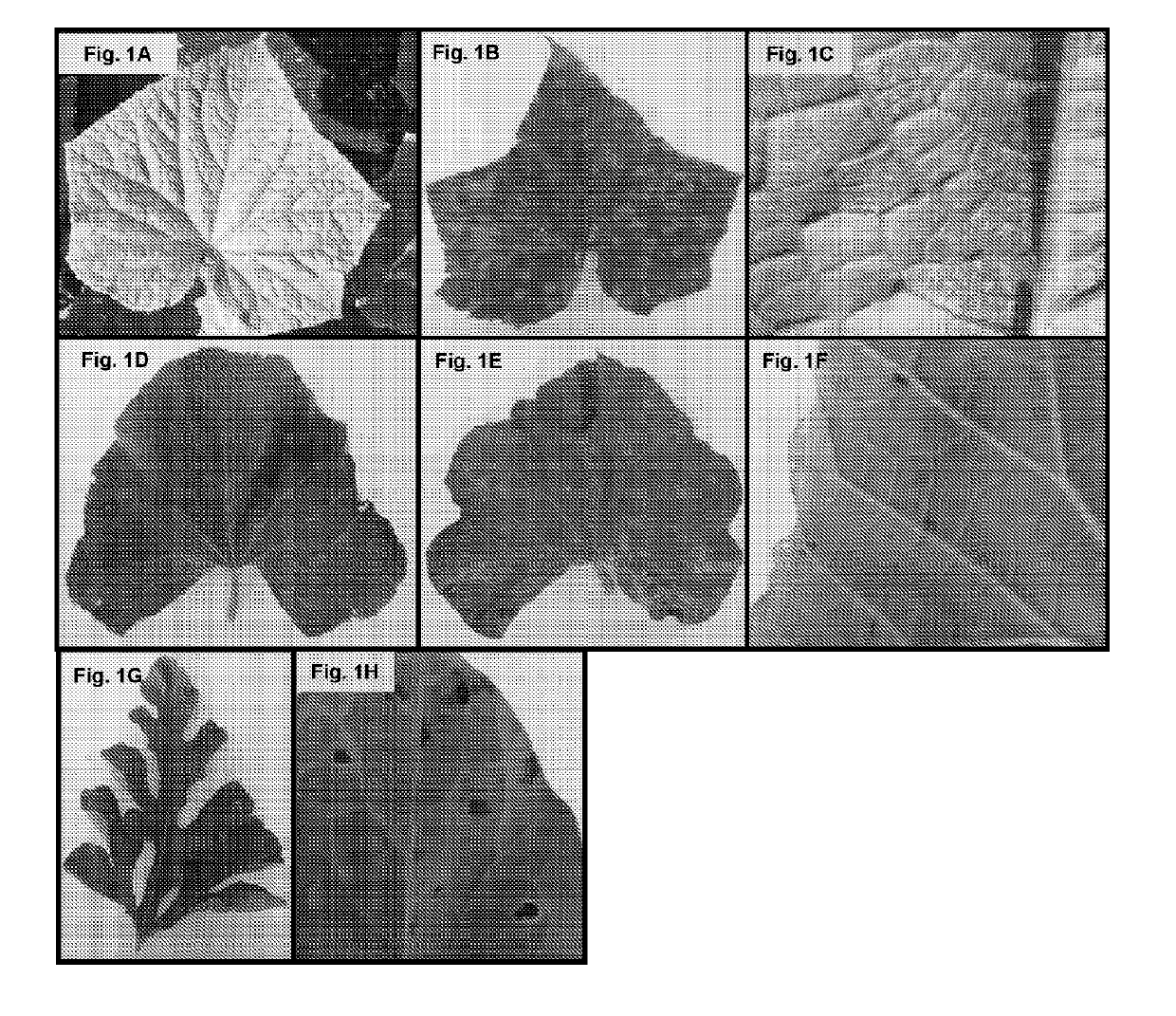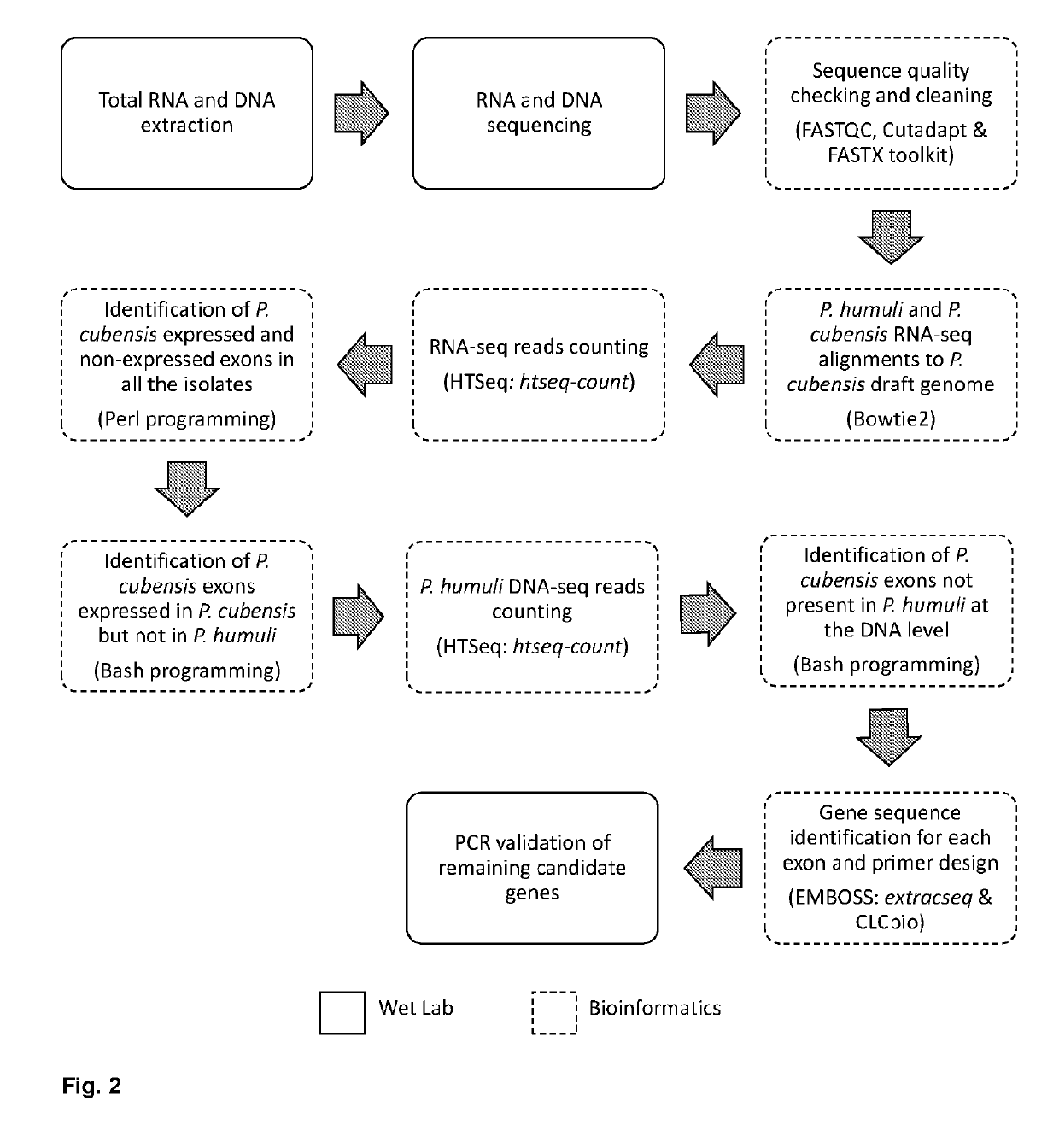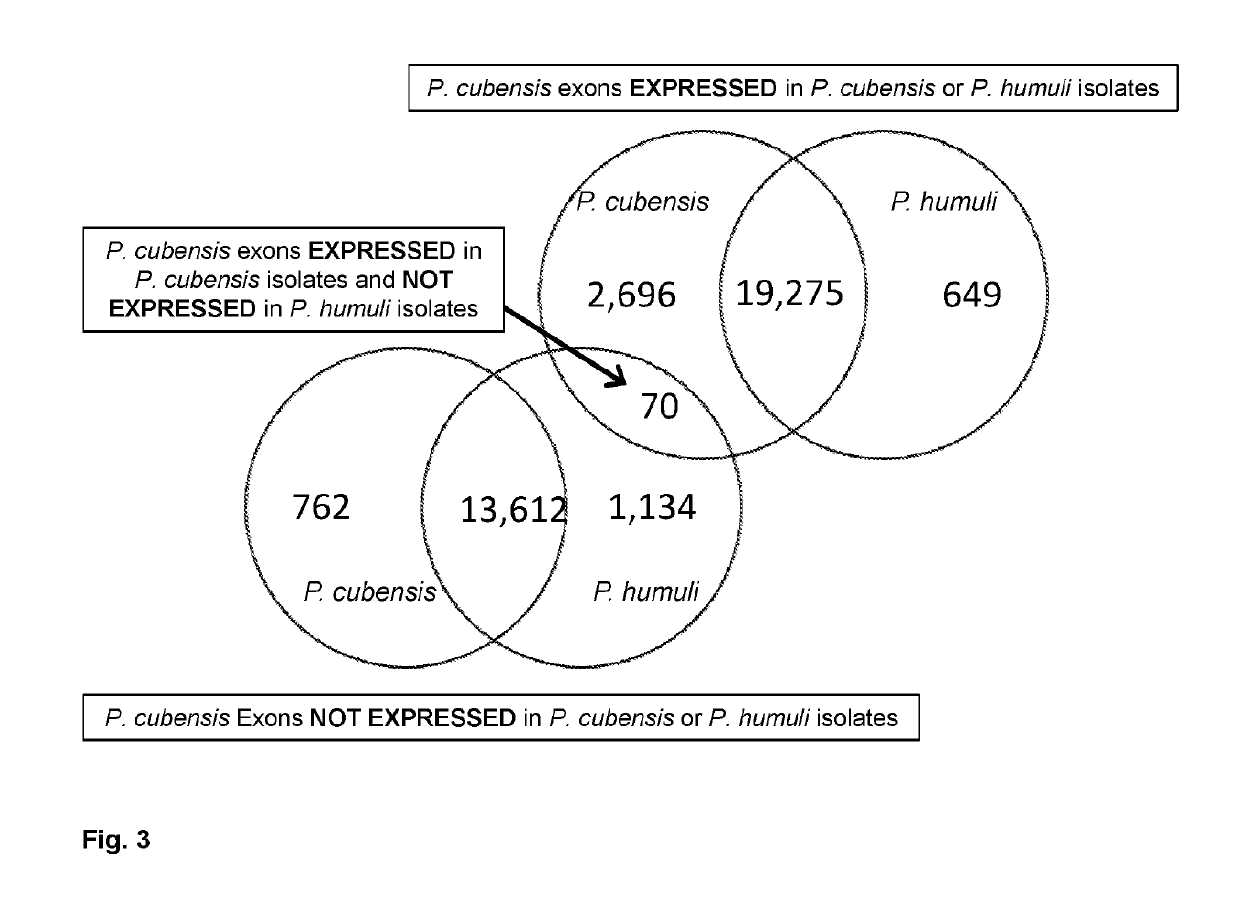Methods for diagnosis of pseudoperonospora cubensis infection and selection of plant resistance genes to the same
a technology of pseudoperonospora and cubensis, applied in the field of diagnosis and treatment of pseudoperonospora cubensis (p. cubensis) infection, can solve the problems of threatening food security, significant damage in agricultural and natural ecosystems, and less effective control strategies, such as fungicide applications, to and reduce the risk of p
- Summary
- Abstract
- Description
- Claims
- Application Information
AI Technical Summary
Benefits of technology
Problems solved by technology
Method used
Image
Examples
example 1
eparation for Sequencing and Candidate Validation
[0174]Isolates of P. cubensis and P. humuli used in this study for genome and transcriptome sequencing are listed in Table 1. Isolates were propagated on detached leaves to minimize contamination from other pathogens and insects and to obtain high quality RNA and DNA for sequencing. P. cubensis and P. humuli isolates were propagated on the host that they were originally isolated from. Detached leaves were placed upside down on moist sterile paper towels inside clear acrylic boxes, spray inoculated with a sporangial suspension of 1 to 3×104 sporangia / ml for each isolate, and incubated at 25° C. with an 12 h light / dark cycle in a precision plant growth chamber (Thermo Fisher Scientific, Waltham, Mass.). Sporangia were dislodged from leaves using a Preval® sprayer (Preval, Coal City, Ill.) with sterile water, collected into a tube, and pelleted by centrifugation. Sporangia intended for use in RNA extractions were then suspended in RNALat...
example 2
NA Extraction, Library Preparation, and Sequencing
[0175]In preparation for RNA and DNA extraction, 50 μl of sporangial suspension from each isolate was collected in a microcentrifuge tube with 500 μm glass beads (Sigma, St. Louis, Mo.) and 1 mg polyvinyl polypyrrolidone (PVPP). Infected lesions, uninfected plant tissue, and other oomycete tissues were each collected into microcentrifuge tubes with three 2.3 mm Zircon beads (Biospec, Bartlesville, Okla.), 50 mg 500 μm glass beads (Sigma), and 1 mg PVPP. All tissues for RNA and DNA extraction were lysed using an OMNI International Bead Ruptor (OMNI International, Tulsa, Okla.). RNA was extracted using the Qiagen Plant RNeasy® Kit (Qiagen, Valencia, Calif.) with an on-column DNAse digestion using the Qiagen DNAse Digest (Qiagen), both according to manufacturer's instructions. RNA was eluted with 30 to 100 μl DEPC-treated water and re-precipitated using 1 / 10 volume of 3M sodium acetate and two volumes of 96% ethanol, washed with 500 μl ...
example 3
ation of Candidate Diagnostic Markers and Primer Design
[0177]RNA-seq and DNA-seq reads were analyzed for quality using FastQC (v. 0.10.1) (Andrews, 2012). Cutadapt (v. 1.8.1) (Martin, 2012) and FASTX-Toolkit (v. 0.0.13) (Hannon, 2010) were used to remove adaptors and trim low quality sequences from the dataset, respectively. Due to the obligate nature of P. cubensis and P. humuli, one may find plant contamination in the RNA and DNA samples. Thus, to determine the level of plant contamination in the samples RNA-seq reads were aligned with the Cucumis sativus (cucumber) genome (Huang et al., 2009) using Bowtie2 short read aligner (v. 2.1.0) (Langmead et al., 2009). To identify diagnostic candidates, RNA-seq reads from P. cubensis and P. humuli were aligned to the P. cubensis draft genome (Savory et al., 2012a; Savory et al., 2012b) using Bowtie2 short read aligner (v.2.1.0). The number of aligned reads in each exon of the P. cubensis draft genome was quantifed using htseq-count from H...
PUM
| Property | Measurement | Unit |
|---|---|---|
| Tm | aaaaa | aaaaa |
| temperature | aaaaa | aaaaa |
| pH | aaaaa | aaaaa |
Abstract
Description
Claims
Application Information
 Login to View More
Login to View More - R&D
- Intellectual Property
- Life Sciences
- Materials
- Tech Scout
- Unparalleled Data Quality
- Higher Quality Content
- 60% Fewer Hallucinations
Browse by: Latest US Patents, China's latest patents, Technical Efficacy Thesaurus, Application Domain, Technology Topic, Popular Technical Reports.
© 2025 PatSnap. All rights reserved.Legal|Privacy policy|Modern Slavery Act Transparency Statement|Sitemap|About US| Contact US: help@patsnap.com



